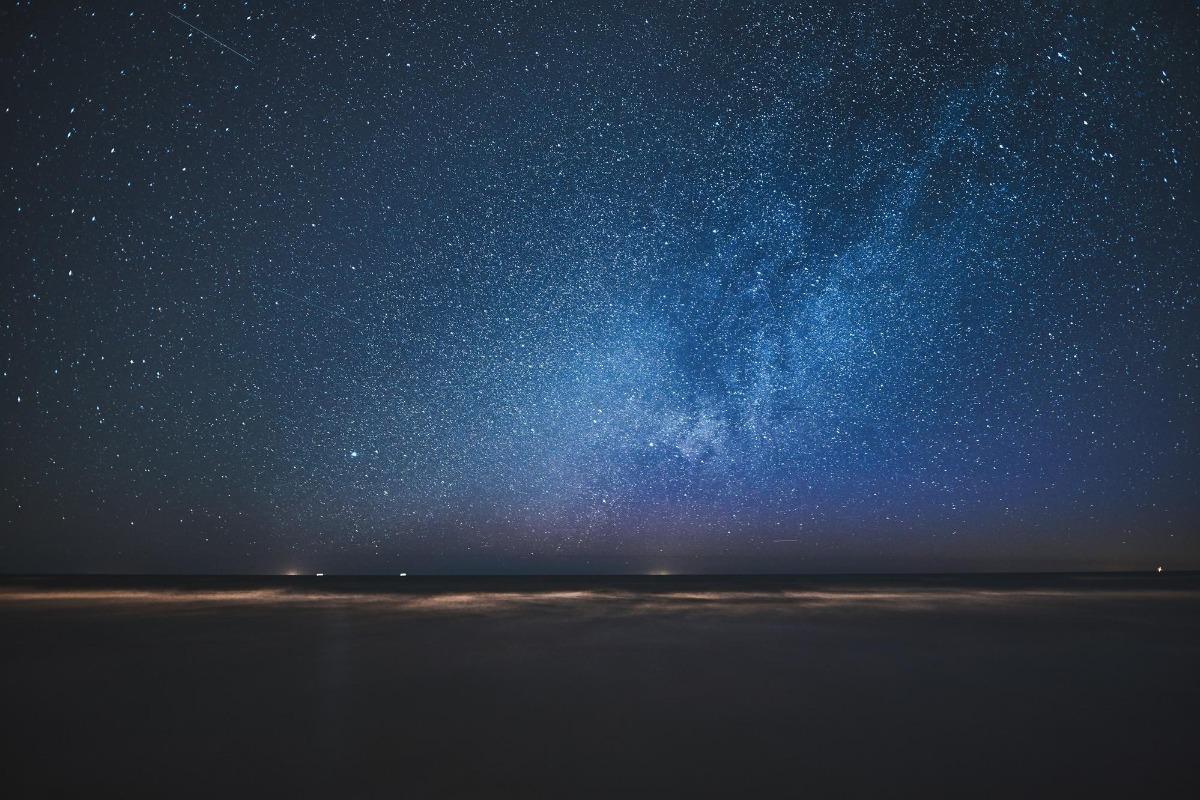
If you've ever gazed at the stars on a clear moonless night, you know how awe-inspiring the experience can be. So, you'll be glad to know that Sandbridge Beach is an excellent spot for stargazing. What's more, you don't need any special equipment to get in on the fun. Just wait till the sun goes down, spread your blanket out on the beach, and prepare to enjoy the show.
If you're visiting with kids, you can turn the whole adventure into a fun educational game. For example, you can award points to each child who correctly identifies a constellation. Plus, you can count meteors, and look for planets - your options go on and on.
Not up for game-playing? If you prefer, you can simply lie back in wonder and drink in all the breathtaking beauty. Listen to the waves crashing on the shore. Savor the salty tang of the air. Hear the cry of the gulls. And be on the lookout for the occasional shooting star. It's truly a magical experience!
What Makes Sandbridge So Good for Stargazing?
All things being equal, ideal stargazing conditions include:
- "Dark skies," a technical term denoting relatively low light pollution
- Unobstructed views - no tall trees or crowded skylines
- Clear weather with little or no cloud cover
- Just a sliver of the moon - crescent or gibbous
Fortunately, Sandbridge Beach offers wide-open views without a single tall building in sight. To the east, it looks out at a seemingly endless ocean. To the west, it borders Back Bay, a massive body of water covering 25,000 acres. To the south, it abuts Back Bay National Wildlife Refuge, with over 9,000 acres of protected natural habitat. And, to the north - well, it's about 30 minutes away from the bright lights of Virginia Beach.
As a result of all this, the night sky over Sandbridge is relatively "dark." That means there are fewer artificial lights obscuring the light of the stars. So, even some of the dimmer stars can be seen by the naked eye. On moonless nights, you might even see the Milky Way!
Sandbridge Stargazing, Month by Month
Which constellations are most visible high above Sandbridge Beach? That depends on the time of year. Here's a handy month-by-month guide:
- January-February: Look for Orion the Hunter, the star of the winter sky, with his familiar three-star belt. Plus, scan the heavens for the Pleiades, the famous "Seven Sisters" - actually a cluster of 800+ stars nestled within the constellation Taurus about 410 light-years away from Earth.
- March: Check out the Big Dipper, easily visible this time of year. Within it, you'll find Ursa Major, named for a figure in Greek mythology - a beautiful woman transformed by Zeus into a female bear. By month's end, you can also see Leo the Lion and, more faintly, Leo Minor.
- April: Be on the lookout for Virgo the Virgin, the second largest constellation in our solar system. Plus, don't miss the annual Lyrid Meteor Shower between April 21 and 23. It reaches its dazzling peak during the wee hours of April 23, with up to 20 or more Lyrids streaking through the sky every hour.
- May: Early in the month, look for the Eta Aquarid Meteor Shower, one of the year's brightest. At its peak, you can expect to see up to 50 meteors per hour. Later in the month, scan the skies for the constellations Hercules and Boötes.
- June: As summer begins, new constellations take center stage: Sagittarius, the mythological centaur drawing his starry bow; Draco the Dragon; and Hercules, a sprawling cluster of stars representing the muscle-bound hero.
- July: If you can find Vega, one of the night sky's brightest constellations, you'll easily spot Lyra right beside it. Unlike some constellations, Lyra really does resemble the thing it's named for: the lyre, or harp, of Orpheus. Also look for Sagitta, the Arrow, and Aquila, the Eagle.
- August: Keep your eyes peeled for Delphinus the Dolphin; Vulpecula the Fox; and Cygnus the Swan, one of the late summer's most recognizable constellations.
- September: It may not much resemble the winged horse of Greek mythology, but Pegasus is nonetheless an impressive constellation - and it's prominent high in the sky from late summer through early autumn.
- October: This month, you can look forward to two meteor showers: the Draconids around October 8-9 and the Orionids on October 20. Plus, scan the skies for several famous constellations, including Cassiopeia and Pisces (the Fish).
- November: Here's another chance to glimpse two meteor showers: the Taurids (November 10-13), with up to 10 meteors per hour; and the Leonids (November 16-18), with up to 20 per hour. Plus, look for the constellations Aries, named for the Greek god of war, and Perseus, named after the hero who slew the snake-haired Medusa.
- December: If you're in Sandbridge during this festive month, you won't want to miss the Geminid Meteor Shower (December 13-14), featuring up to 120 meteors per hour at its peak. Viewing is best after 3 a.m., so bundle up, stake out a spot on the beach, and get ready to be bowled over. Keep an eye out for brilliant constellations, too, including Ursa Major.
Daytime Is Dazzling as Well
Night and day, you'll never run out of fabulous things to do here at Sandbridge Beach. Bring the family along and make memories to last a lifetime!












